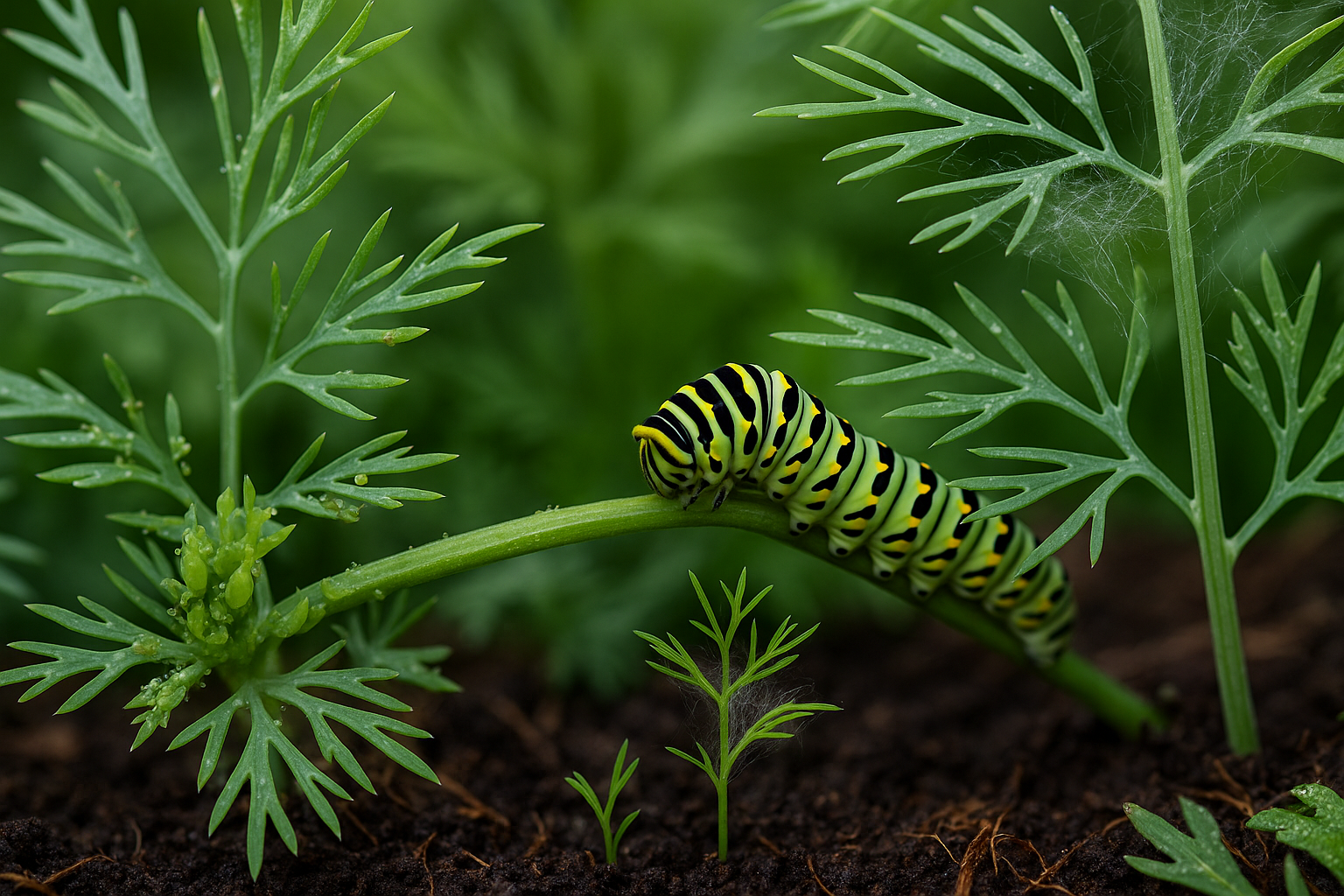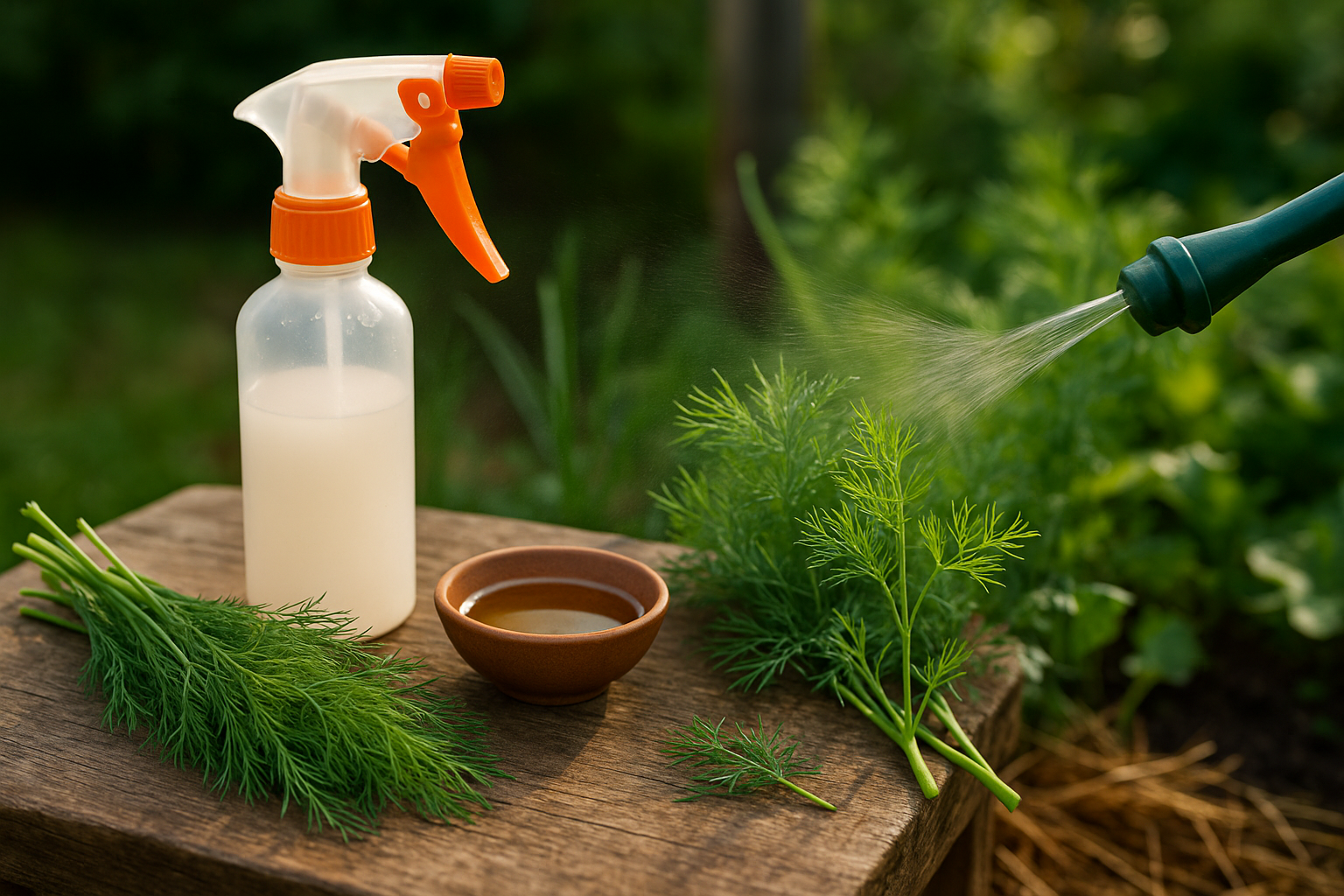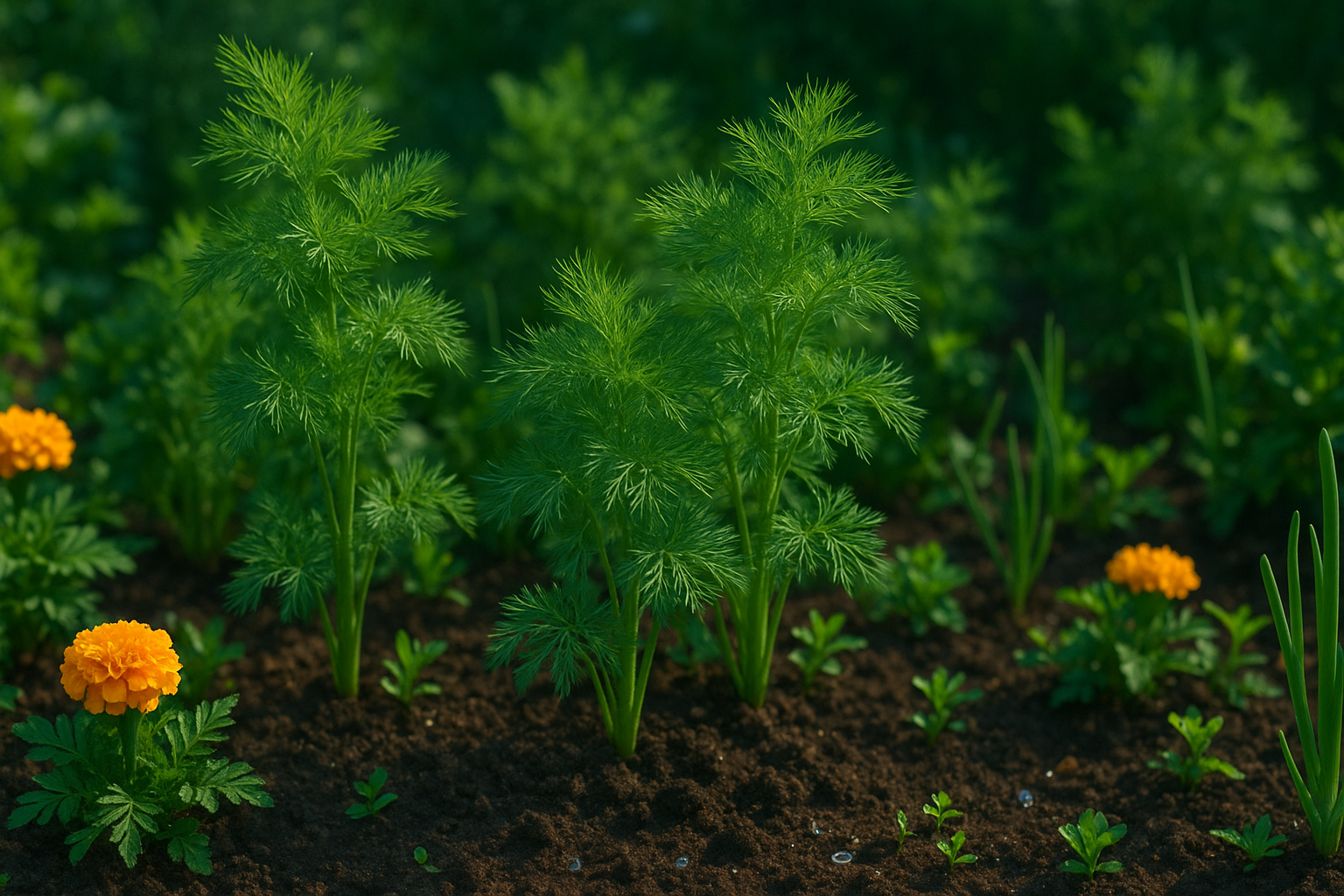Introduction
Dill is a favorite herb in home gardens, prized for its fresh flavor in everything from pickles to salads. But dealing with dill pests can be a constant challenge for gardeners and cooks alike. Whether you’ve noticed tiny caterpillars munching on the delicate leaves or aphids clustering along the stems, these troublemakers can quickly ruin your crop if left unchecked.
Fortunately, you don’t need to resort to harsh chemicals to keep your dill thriving. This guide will walk you through the most common dill pests to watch out for, such as parsley worms and aphids, and offer natural solutions to stop them in their tracks. With a few simple strategies and keen observation, you’ll be able to protect your dill and enjoy a healthy, vibrant harvest—no sprays required.
Ready to reclaim your herb bed? Let’s dive into the pests you need to know and the natural fixes that really work.
Common Pests That Attack Dill

Dill is a fragrant herb loved in the kitchen, but it unfortunately attracts several persistent pests, including aphids, swallowtail caterpillars, spider mites, and thrips.
Aphids tend to cluster on the stems and undersides of dill leaves, feeding on plant sap and causing yellowing leaves, sticky residue, and overall stunted growth. If you spot tiny green, black, or white insects and leaves that look puckered or curled, aphids are likely the culprit.
Swallowtail caterpillars, also called parsley worms, are easy to spot with their distinctive bright green and black bands. They can quickly chew large sections of foliage, leaving your dill looking ragged or skeletal. Although they transform into beautiful butterflies, their voracious appetites can ruin your harvest.
Spider mites are almost invisible to the naked eye but leave diagnostic webbing and speckled, pale leaf surfaces behind. Heavy infestations cause leaves to turn yellow and drop off.
Thrips, tiny slender insects, puncture leaf cells to suck out their contents, resulting in distorted, silvery streaks or patches on leaves.
Dill’s leafy structure and aromatic oils attract these pests, either as a food source or as a host for laying eggs. To minimize damage, regularly inspect plants and remove pests by hand, use a blast of water to dislodge small insects, or introduce natural predators like ladybugs.
With vigilance and some simple care steps, you can keep your dill healthy and productive throughout the growing season.
Natural Pest Prevention Strategies
Maintaining a clean and tidy garden is your first line of defense against pests. Regularly remove plant debris, fallen leaves, and weeds, as these can harbor insects and diseases. Practice crop rotation—switch up what you plant in each bed every season—so pests that target specific vegetables don’t become entrenched, and your soil stays healthier and more balanced.
If you prioritize healthy soil by adding compost and avoiding harsh chemical fertilizers, your plants will be stronger and more resistant to damage. Another smart tip is companion planting, which means grouping certain plants together to boost each other’s defenses. For example, plant onions and marigolds around dill or tomatoes; marigolds can deter nematodes while onions repel aphids.
These natural partnerships make it harder for pests to take hold and encourage beneficial insects that eat the bad ones. Don’t forget about physical barriers, too: use row covers to protect young plants from flying insects, or even hand-pick larger pests like caterpillars off your crops. This keeps infestations under control without relying on pesticides.
By combining these simple strategies, you’ll create a resilient, thriving garden that keeps most common pests at bay the natural way.
Organic Treatments for Dill Pests

Keeping your dill healthy without resorting to harsh chemicals is totally doable with a few simple, organic pest solutions you can make at home. One tried-and-true remedy is insecticidal soap: just mix one tablespoon of gentle liquid dish soap (free from degreasers, bleach, or fragrance) with one quart of water in a spray bottle.
For neem oil spray, blend one teaspoon of cold-pressed neem oil and half a teaspoon of mild dish soap into one quart of water, shake well, and use immediately. Both sprays work by smothering pests like aphids or spider mites and disrupting their life cycles, but it’s crucial to spray them directly onto pests and under the dill leaves where bugs like to gather.
Water rinses are the simplest gentle option—just use a strong jet of water to dislodge pests early in the morning so the plants dry quickly.
For all treatments, test the spray on a small section of your dill and wait 24 hours to check for leaf burn, as some plants can be extra sensitive. Always avoid applying sprays during hot, sunny midday hours to prevent leaf damage; early morning or late evening is best.
Remember, since dill is edible, go light on your applications and rinse the plants with clean water before harvesting. Plan to reapply your chosen solution every 5–7 days or after heavy rain until pests subside, but pause if you notice any leaf yellowing or stress.
With consistency, a bit of patience, and these safe, natural remedies, you can keep your dill patch thriving and chemical-free all season.
Beneficial Insects and Natural Predators
Beneficial insects like ladybugs, lacewings, and parasitic wasps play a crucial role in keeping your dill plants healthy by naturally targeting common pests such as aphids and caterpillars. Ladybugs, for example, can eat hundreds of aphids in their lifetime, while lacewing larvae—often called “aphid lions”—voraciously feed on soft-bodied insects.
Parasitic wasps are tiny but mighty—they lay their eggs inside pest insects, stopping infestations before they get out of hand. To attract these helpful insects, try planting a mix of pollinator-friendly flowers such as marigolds, alyssum, and yarrow around your dill bed; these blooms provide food and shelter for adult beneficials.
Avoid using broad-spectrum pesticides that can harm both pests and the natural allies you’re trying to support. Instead, practice spot-treating with safer options or hand-pick visible pests when necessary. Keeping a balance between pests and predators is key to a resilient garden: a few pests will attract more predators.
By fostering this partnership, you reduce the need for chemical controls while strengthening your garden’s natural defenses. This approach not only protects your dill but also supports a healthier, more diverse ecosystem in your backyard.
What to Do if You Have a Severe Infestation
If you notice your plants are experiencing major leaf drop, no new growth, or large swarms of pests crawling over stems and leaves, you’re likely dealing with a severe infestation. At this point, it’s often best to remove the most heavily affected plants entirely to prevent the insects or disease from spreading to healthier plants.
Use a sealed bag to dispose of infested material and thoroughly clean your tools afterward. After removal, don’t rush to replant in the same soil; pests and eggs can linger. Instead, turn the soil and mix in well-rotted compost or organic matter to support soil health. You might also consider solarizing the area by covering it with clear plastic for a few weeks to kill off hidden pests.
When you replant, choose pest-resistant plant varieties if possible, and avoid crowding plants to improve air circulation. Keep up with routine monitoring, checking both the tops and undersides of leaves regularly. Early intervention—like handpicking pests or using gentle sprays—can stop a small problem before it becomes overwhelming. Consistent attention is key to keeping future infestations under control.
Conclusion & Quick FAQ
Natural pest control offers safer options for protecting your dill, benefiting both your herb and the environment by minimizing harmful chemicals. Adopting integrated pest management—using a mix of manual removal, beneficial insects, and organic sprays—helps keep your dill healthier over the long term.
Neem oil is generally safe for dill when used as directed, but avoid spraying in direct sun or during flowering to protect pollinators. Check your plants at least twice a week for pests or signs of damage. By combining these methods, you’ll boost plant health and support a thriving garden ecosystem.
